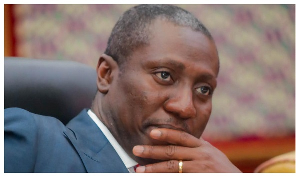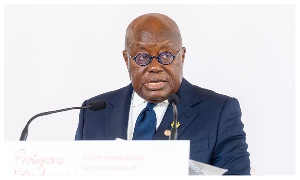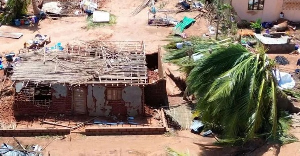THE WORLD number two gold miners AngloGold Ashanti last month reported a 63% decline in headline earning per share for its March 2005 quarter to 39 cents from 104 cents in the December 2004 quarter.
Analysts had expected a marginal increase in headline earning per share to 68cents, with forecasts ranging from 55 cents to 78 cents.
The group reported basic earning per share of 19 cents for the March quarter down 78% from the previous quarter, while headline earnings adjusted for the effect of unrealized non-hedge derivatives fell 41% to 175 cents from 296 cents.
AngloGold Ashanti gold output fell 5% to 1.569 million troy ounces in the March quarter from 1.651 million ounces in the previous quarter.
Following its long planned closure, the groups Ergo mine in South Africa was being treated as a discontinued operation and the December 2004 quarter's number had been restated to exclude Ergo.
The group also attributed the decline in production to lower South African production and usually strong performance during the December 2004 quarter at its 40% held Morila mine in Mali and Cerro Vanguardia in Argentina, in which AngloGold Ashanti has a 92.5% stake.
The group's gold price received rose 7% to R82, 152 a kilogram from R76, 691 or $424 per once from $395.The increase in the price was attributed to the restructure of the group's hedge announced in January 2005.
The restructure of the hedge announced in January had "delivered the intended positive impact on our received price more closely matching the average spot price for the quarter", AngloGold Ashanti Chief Executive Officer Bobby Godsell disclosed.
AngloGold Ashanti's total cash costs rose 208% to R54 778 per kilogram from R53 299 or $284 per ounce from $274.
Again the group's total net delta of its hedge position rose to 10.72 million ounces at the end of December 2004.
As at last month, AngloGold Ashanti's marked to market value of its hedge book stood at a negative $1.046 billion or R6.35billion, based on a gold price of $432 and prevailing market interest rates and volatilities at the time, the group said.
In respect of the former Ashanti assets, Godsell said that the March quarter had seen improvement in many areas.
After five quarters of decline, gold production at the Obuasi mine increased by 2% to 92 000 ounces, with tonnage treated up 10% on the previous quarter.
"I'm pleased to say that during April, underground grades at Obuasi have improved by one gram per ton and management expects production to show progressive increases in each of this year's remaining quarter," he stated.
At Iduapriem in Ghana, in which the group has an 85% stake, production improved 10% with cash costs down 19%.
"These improving trends across the Ashanti assets are important and give me much encourage about what these assets can contribute to this company as the year progresses," CEO added.
Referring to margins, he observed that it was undoubtedly a great frustration for investors that as the gold price had risen over the past year; margins in gold companies had shrunk.
One of the drivers of the higher gold price was the weaker US dollar, which in turn meant stronger operating currencies in almost all of AngloGold Ashanti producing regions including Australia, Argentina, Brazil, Namibia and South Africa.
Added to this, significantly higher oil prices and the growth demands of China had translated into price inflation in many of the company's consumables such as cement, tyres and steel.
Quantum increases in the cost of contract mining were also being seen, AngloGold Ashanti said.
"The net impact for this company is higher total cash costs expressed in US dollar terms and reduced margins.
This is the challenge that we have to take head on as we seek to improve our returns to investors," he said.
Click to view details



Business News of Tuesday, 19 July 2005
Source: Chronicle
Anglogold Ashanti Records 63% Decline in Earinings
Opinions















